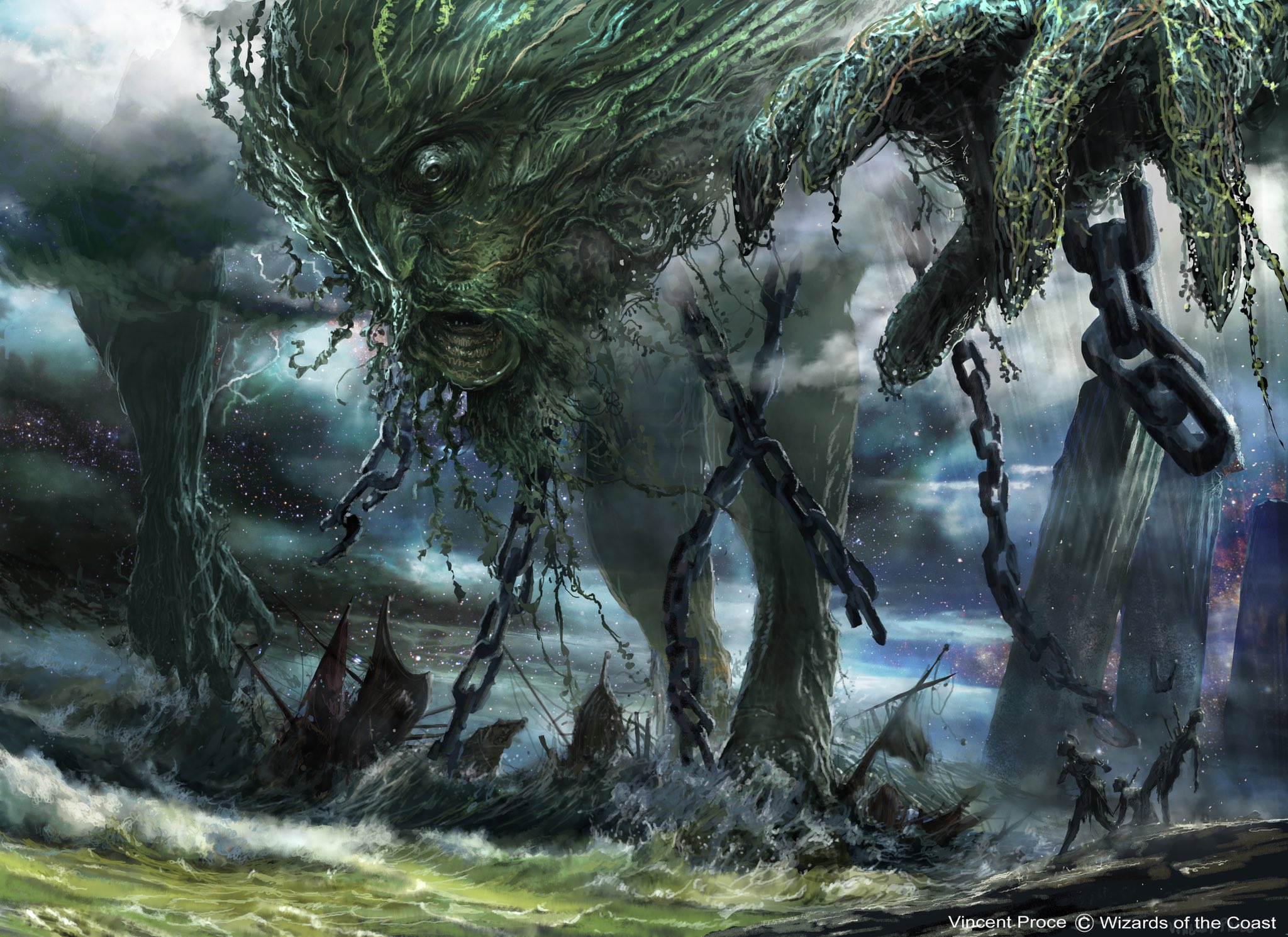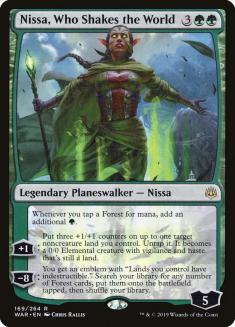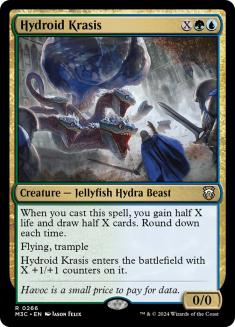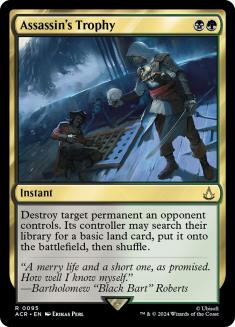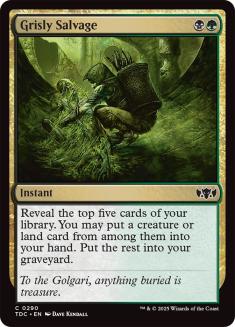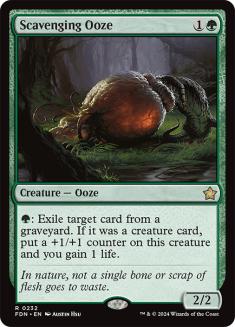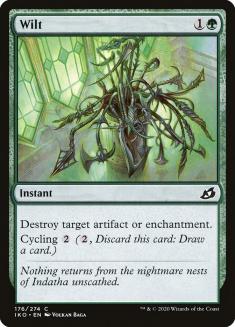After seeing the Pioneer bans, I assumed the format would continue being a sea of aggro decks. While that’s certainly true, the format has ended up in a good place. With aggro at the forefront, people are able to tune their decks accordingly and swing the metagame in the opposite direction.
The aggressive decks in the format are comprised of Mono-Black Aggro, various Monastery Swiftspear decks, Azorius decks with flyers, and the occasional Winota, Joiner of Forces deck. Orzhov Auras is also scary. There isn’t much of a consensus on which deck is best because they all have their pros and cons.
Wilderness Reclamation is starting to show up and exert its influence in Pioneer. The weakened (but still strong) Lotus Field decks also exist. Both struggle with aggro so you probably won’t see too much of them.
People are trying to bring ramp back but the results so far have been mediocre. Mono-Green Devotion is likely a better alternative, even though it was weakened by the Walking Ballista ban. Karn, the Great Creator is even worse and sometimes you have a pile of mana and not much to do with it.
Control isn’t very popular but that can change. They have plenty of options, including various versions of Azorius Control and Jeskai Lukka. Niv-Mizzet Reborn is the king of midrange but Sultai can make a claim to that title as well. Both have benefited from the recent bans, which removed several of their worst matchups.
Not only did banning combo remove several bad matchups for Sultai Midrange, it means the metagame will have more good matchups. Plus, the cards you had to play in order to fight combo can be cards to further cement those matchups. Aggro might be king now but that won’t last for long!
In a low-power-level format, especially where black has the strongest one-mana interaction, it’s relatively easy to build a midrange deck that can fight the biggest threats. That’s how I’ve been spending my time and I’ve found the answer.
Creatures (18)
- 3 Scavenging Ooze
- 4 Satyr Wayfinder
- 2 Tireless Tracker
- 3 Hydroid Krasis
- 2 Murderous Rider
- 4 Uro, Titan of Nature's Wrath
Planeswalkers (3)
Lands (21)
Spells (18)
- 3 Forest
- 1 Island
- 4 Thoughtseize
- 2 Grisly Salvage
- 2 Abrupt Decay
- 4 Fatal Push
- 1 Assassin's Trophy
- 1 Heartless Act
Sideboard

The end-game has changed dramatically. Rather than trying to grind with Tireless Tracker or Traverse the Ulvenwald for Emrakul, the Promised End, this version of Sultai employs the Standard end-game of Nissa, Who Shakes the World and Hydroid Krasis. Similarly to Ishkanah, Grafwidow, Nissa can produce an army of blockers against opposing aggression, albeit over time.
Previous Pioneer metagames didn’t lend themselves to playing Nissa in a midrange deck. The format was too fast thanks to aggro and combo. Combo, in particular, was so difficult you often had to maindeck cards like Thought Erasure and Drown in the Loch to have a fighting chance against them. With that out of the way, we don’t have to spread ourselves as thin and can focus on hammering a smaller subset of archetypes.
Since the average game is going to last longer, we have time to build toward Hydroid Krasis. While not absolutely necessary, I like having Krasis for additional percentage points against Five-Color Niv-Mizzet, plus it allows you to easily go over the top of aggro and midrange.
Playing some additional removal spells in a field full of aggro is a classic midrange maneuver. Although I took much of the inspiration for this build from Magic Online, I don’t agree with playing cards like Polukranos, Unchained when you could play more removal or Tireless Trackers instead.
Deciding on which removal spells to run is always a fun exercise. In this case, I respect things like Niv-Mizzet Reborn and Wilderness Reclamation, so I’m happy playing a copy of Assassin’s Trophy even though the card frequently disappoints. Running Fatal Push, Abrupt Decay, and Eliminate leaves you incredibly weak to more expensive permanents. There’s room for some spice by playing something like a Languish or Extinction Event maindeck, which isn’t too outlandish. I wouldn’t be upset by a third Murderous Rider either.
Tireless Tracker isn’t always a maindeck card but it’s solid against the metagame spread and opens up sideboard slots. You’ll find yourself lacking sources of card advantage with only Uro. Even though this version has Hydroid Krasis, I found myself wanting more. The Clues from Tracker give you enough resources to make Krasis large enough to matter and it provides a powerful clock on its own.
I’m a fan of using Ishkanah, Grafwidow as a way to stop aggressive decks in their tracks. However, it’s not clear whether Ishkanah is a better choice than green’s Baneslayer Angel, Elder Gargaroth.
Not requiring delirium is minor but it’s not uncommon for opponents to bring in something like Soul-Guide Lantern in order to stop Uro, Titan of Nature’s Wrath. Being more effective at brick-walling larger threats like Bonecrusher Giant, Steel Leaf Champion, and anything with prowess also has upsides. Should you really want to hammer aggro, you could do worse than playing the Gargaroths maindeck.
The main draw for delirium is to enable a Traverse the Ulvenwald package that usually ends with Emrakul, the Promised End. That’s typically only necessary against certain control and midrange decks, very few of which are popular in Pioneer. Even the decks that still play Traverse have been cutting Emrakul, so what’s the point? It’s not like the rest of the toolbox options are very special.
Once Traverse is out of the deck and we have a competitive alternative to Ishkanah, we can seriously consider moving away from delirium. We don’t have to play weird card types anymore! Grisly Salvage still stays because it can find Hydroid Krasis, Uro, Murderous Rider, and Tireless Tracker, which is a fairly wide spread of options for what’s supposed to be a narrow search card. If Uro weren’t so demanding, I could even see cutting it entirely. Maybe Jace, Vryn’s Prodigy is what we should be doing instead but that would make me want Grisly Salvage again.
We have a few more sources of lifegain in the deck with Scavenging Ooze but it’s not entirely worth playing. Given enough time, it can hold off almost anything but that’s not always a luxury you have. It’s more of a hedge against Stitcher’s Supplier decks but it’s not clear how much they’ll show up in the future.
Since we’re playing Nissa, Who Shakes the Worlds again, slanting the manabase to have more Forests and fewer fastlands like Botanical Sanctum makes sense. Ideally, I’d want more Watery Graves and fewer Breeding Pools but Zagoth Triome keeps our sources for each color high enough that it’s probably fine. Having fewer untapped sources of black mana on Turn 1 could cost us though. Twenty green sources, seventeen black, and twelve blue are numbers I’m happy with.
In three-color midrange, we’re rarely short on sideboard options. This time is no different. Noxious Grasp could be excellent for mirrors and Aether Gust could be even more versatile. Soul-Guide Lantern would help against any graveyard deck. I’ve seen a lot of sideboards with Kalitas, Traitor of Ghet for the same reason. Sadly, it doesn’t do a good enough job against aggressive decks for my tastes. Negate might have more high value targets than Disdainful Stroke but that’s going to vary week-to-week.
People are sleeping on the sideboard Wilts. It can help cover Fires of Invention, Wilderness Reclamation, Ensoul Artifact, All That Glitters, Leyline of the Void, and any other nonsense you might run into. Thankfully, we can mostly ignore Leyline of the Void at this point, but you’ll be happy to have it with more graveyard-reliant versions.
Disfigure and Cry of the Carnarium are my anti-aggro choices, mostly for efficiency. The larger the aggro deck is, the easier those matchups become. They aren’t ideal against every aggro deck but I want my sideboard cards to help swing difficult matchups. Both of these cards will help against something like Mono-Red Aggro, whereas loading up on versatile two-mana removal spells won’t swing the matchup.
Overall, the third Scavenging Ooze and the pair of Grisly Salvages are the flex slots. You could remove them for whatever you think necessary. Maybe you want some maindeck sweepers, extra spot removal, threats, or card advantage. No matter what, you’ve got the flexibility to make it happen.
As is, you have a fighting chance against any deck in Pioneer’s metagame. There will always be some matchups that are tougher than others, but depending on what you expect, you can figure out how to be successful.

